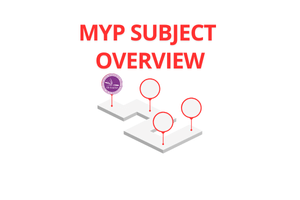Table of Contents
- 📌 Subject Overview
- 🌟 Key Features
- 🎯 Aims and Objectives
- 📖 Curriculum Content
- 🔑 Key Concepts
- 🌐 Global Contexts
- 📚 Text Types and Resources
- 📊 Reading and Data Analysis
- ✍️ Writing Skills Development
- 🎤 Oral Communication
- 📐 Assessment Criteria
- 🔗 Interdisciplinary Units (IDUs)
- 🚀 Sample Projects
- 📌 Assessment Tasks
- ✅ Summary
🔭 MYP Physics – Comprehensive Course Summary
📌 Subject Overview
MYP Physics engages students in exploring the fundamental laws governing our universe. Through practical experiments, theoretical studies, and critical thinking, students understand physics' role in technological innovations and societal impacts.
🌟 Key Features
🔬 Experimental Inquiry: Hands-on investigations promoting active learning.
📐 Mathematical Rigor: Application of mathematics in understanding physics.
⚙️ Technological Integration: Connection between physics principles and technology.
🌏 Ethical Considerations: Evaluation of societal and environmental impacts of physics-related technologies.
🎯 Aims and Objectives
📚 Fundamental Laws: Grasp foundational physics laws and applications.
🛠️ Scientific Inquiry: Develop experimental and problem-solving skills.
💡 Technological Appreciation: Understand physics' contributions to technology.
🧠 Critical Thinking: Analyze societal impacts of technological advancements.
📖 Curriculum Content
🚀 Forces and Motion
Newton's Laws
Kinematics
Dynamics
⚡ Energy and Work
Conservation of Energy
Energy Types
Mechanical Work
🔌 Electricity and Magnetism
Circuits and Ohm's Law
Electromagnetic Principles
🌊 Waves and Sound
Properties of Waves
Sound Waves
Electromagnetic Spectrum
🌡️ Thermodynamics
Heat Transfer
Temperature
Thermal Equilibrium
🔑 Key Concepts
🔥 Energy: Understanding transfer and conservation.
💪 Forces: Interaction creating motion or equilibrium.
🔩 Systems: Analysis of particles, circuits, and wave systems.
📊 Evidence: Mathematical modeling and experimental data interpretation.
🌐 Global Contexts
🛠️ Scientific and Technical Innovation
Innovations in engineering derived from physics concepts.
⚖️ Fairness and Development
Investigating equitable access to electricity and renewable resources.
🌍 Globalization and Sustainability
Environmental implications of global energy usage.
📚 Text Types and Resources
📘 Physics Textbooks & Lab Manuals: Core materials for theoretical and practical physics.
📈 Data Tables & Simulation Tools: Interactive learning and problem-solving aids.
📜 Research Articles & Case Studies: Real-world physics applications and technological insights.
🎬 Documentaries & Experiments: Visual learning resources enhancing conceptual understanding.
📊 Reading and Data Analysis
📉 Graph Interpretation: Analysis of velocity-time and force-displacement graphs.
🔍 Experimental Data: Practical interpretation of physics experiments.
🧮 Result Comparison: Evaluating experimental outcomes against theoretical predictions.
✍️ Writing Skills Development
📝 Lab Reports: Documenting methods, results, and analysis.
📄 Physics Essays: Exploring technological advancements and implications.
📓 Scientific Journals: Reflecting on experiments and discoveries.
🎤 Oral Communication
📢 Experimental Presentations: Clearly communicating methodologies and results.
🚀 Innovation Discussions: Presenting on physics-driven technological advancements.
🗣️ Ethical Debates: Discussing ethical implications of physics technologies, such as nuclear power.
📐 Assessment Criteria
📗 Criterion A: Knowing and Understanding: Mastery of physics principles.
🧪 Criterion B: Inquiring and Designing: Competence in designing physics investigations.
📊 Criterion C: Processing and Evaluating: Data analysis and drawing logical conclusions.
🌍 Criterion D: Reflecting on Impact: Insightful reflection on physics' role in society.
🔗 Interdisciplinary Units (IDUs)
🛠️ Physics and Design
Creating prototypes demonstrating physics principles.
🌎 Physics and Geography
Analyzing seismic waves to study earthquakes and tsunamis.
📏 Physics and Mathematics
Mathematical modeling of physical phenomena.
🚀 Sample Projects
🌉 Bridge-Building Challenge: Engineering and testing bridges based on physics concepts.
🌬️ Renewable Energy Model: Designing and constructing renewable energy systems.
🔊 Sound Wave Analysis: Experimentally measuring sound frequencies and properties.
📌 Assessment Tasks
🧾 Lab Report: Detailed documentation of physics experiments.
🎓 Presentation: Research and presentation on advanced physics topics (e.g., aerodynamics of flight).
📉 Data Analysis Task: Critical analysis of experimental data in physics investigations.
✅ Summary
MYP Physics provides students with a solid foundation in understanding the physical world through experimentation, mathematical reasoning, and technological application. The curriculum prepares students for advanced study and informed citizenship, highlighting physics' relevance in global contexts and ethical decision-making.

